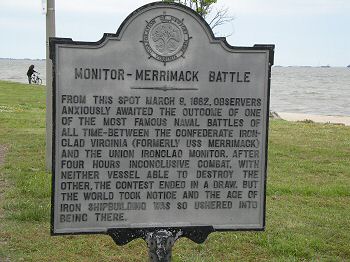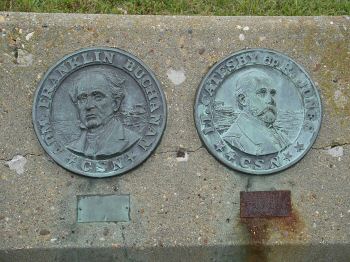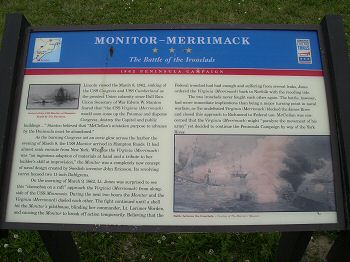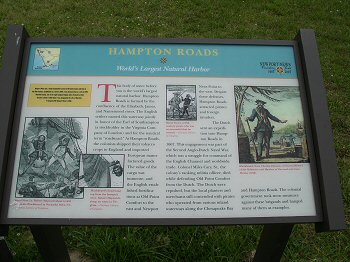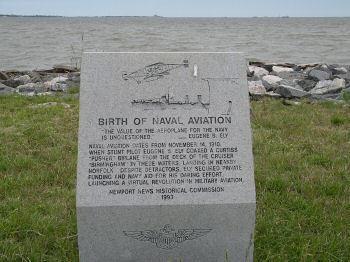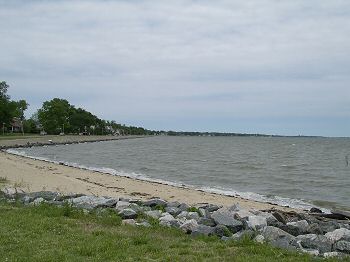|
Monitor-Merrimack Overlook
16th Street & Oak Avenue, Anderson Park
Scene of the famous March 9, 1862 Battle of the Ironclads between the
C.S.S. Virginia and the U.S.S. Monitor.
CSS Virginia vs USS Monitor
Civil War Naval Battle
March 9, 1862
At dawn on 9 March 1862, CSS Virginia prepared for renewed combat. The
previous day, she had utterly defeated two big Federal warships, Congress
and Cumberland , destroying both and killing more than 240 of their
crewmen. Today, she expected to inflict a similar fate on the grounded
steam frigate Minnesota and other enemy ships, probably freeing the lower
Chesapeake Bay region of Union seapower and the land forces it supported.
Virginia would thus contribute importantly to the Confederacy's military,
and perhaps diplomatic, fortunes.
However, as they surveyed the opposite side of Hampton Roads, where the
Minnesota and other potential victims awaited their fate, the Confederates
realized that things were not going to be so simple. There, looking small
and low near the lofty frigate, was a vessel that could only be USS
Monitor , the Union Navy's own ironclad, which had arrived the previous
evening after a perilous voyage from New York. Though her crew was
exhausted and their ship untested, the Monitor was also preparing for
action.
Undeterred, Virginia steamed out into Hampton Roads. Monitor positioned
herself to protect the immobile Minnesota , and a general battle began.
Both ships hammered away at each other with heavy cannon, and tried to run
down and hopefully disable the other, but their iron-armored sides
prevented vital damage. Virginia 's smokestack was shot away, further
reducing her already modest mobility, and Monitor 's technological
teething troubles hindered the effectiveness of her two eleven-inch guns,
the Navy's most powerful weapons. Ammunition supply problems required her
to temporarily pull away into shallower water, where the deep-drafted
Virginia could not follow, but she always covered the Minnesota .
Soon after noon, Virginia gunners concentrated their fire on Monitor 's
pilothouse, a small iron blockhouse near her bow. A shell hit there
blinded Lieutenant John L. Worden , the Union ship's Commanding Officer,
forcing another withdrawal until he could be relieved at the conn. By the
time she was ready to return to the fight, Virginia had turned away toward
Norfolk. |
